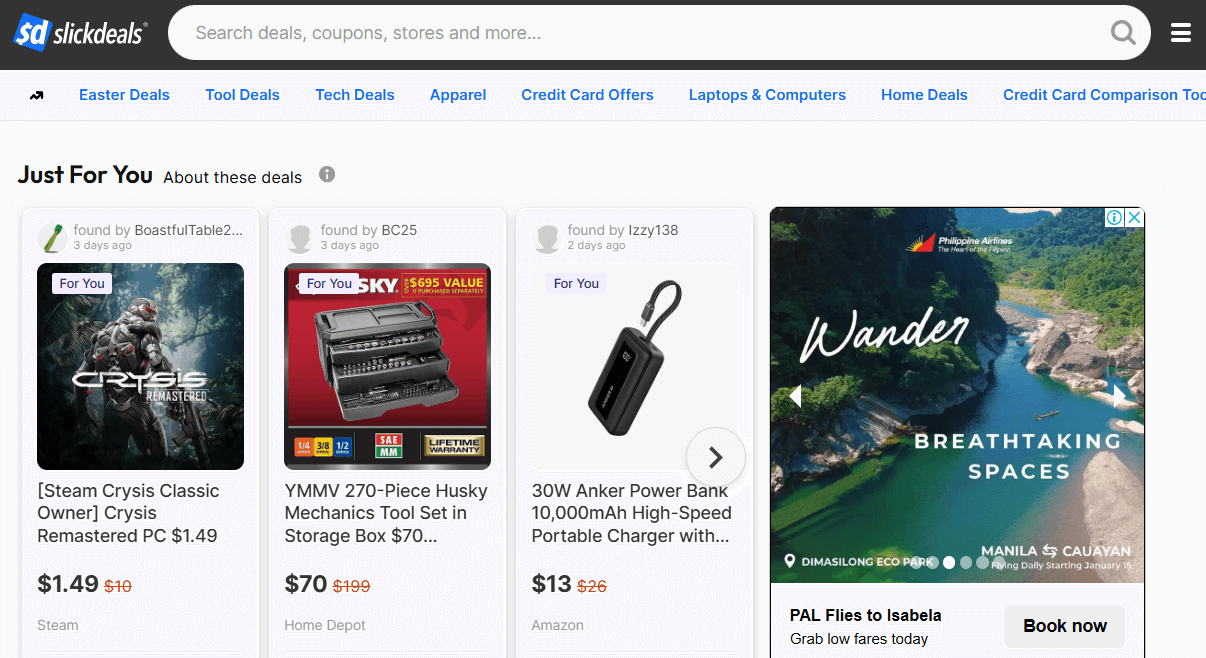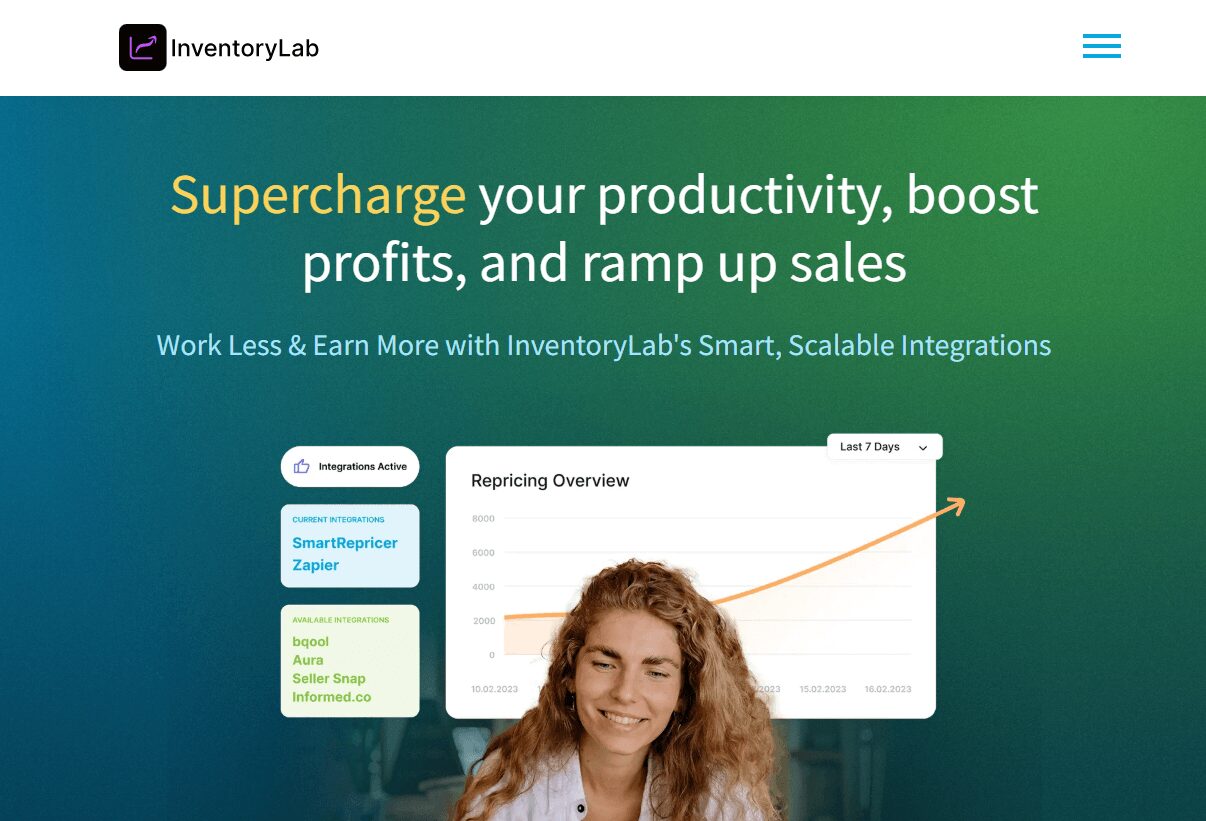Online arbitrage is a method of reselling where you buy products from one online store at a lower price and then resell them on another online platform, such as Amazon USA, eBay, or Walmart, for a profit. It’s essentially digital flipping.
You find a product on an online retailer like Walmart, Target, or Home Depot that’s either on sale or underpriced. You purchase the item and then list it on a marketplace like Amazon at a higher price.
When a customer buys it, you ship the product yourself or use a service like Amazon FBA to handle the shipping. After marketplace fees are deducted, the remaining difference is your profit.
-
Online arbitrage is a business model where you buy discounted products from online retailers and resell them for profit on marketplaces like Amazon or eBay.
-
Success in online arbitrage depends on researching product demand, not just finding low prices.
-
You can boost your profits by stacking discounts through coupons, cashback, and gift cards.
-
Tools like Keepa, BrickSeek, and repricing software help you stay competitive and avoid common mistakes.
-
Starting small and reinvesting your profits is the best way to grow a sustainable online arbitrage business.
Here’s an example:
Let’s say you’re exploring Walmart’s website and see a popular blender on sale for $40. You go to Amazon and notice the same blender is selling for $75.
You buy 3 blenders from Walmart for a total of $120, and then list them on Amazon for $75 each. After Amazon takes out fees (around $15 per item), you end up with $60 per sale.
So:
3 blenders at $75 = $225 total revenue
After Amazon fees: 3 x $60 = $180
Cost for the blenders: $120
Profit: $180 – $120 = $60
You didn’t even need to leave your house. You bought the products online and had them shipped to Amazon’s warehouse through FBA, where Amazon handled packing and delivery.
It follows the same basic principle as most business models—you source products at a lower cost and resell them at a higher price to earn a profit.
The main difference with online arbitrage is that it involves sourcing items that are already available on online retail websites and reselling them on other online marketplaces.
To better understand how online arbitrage fits into the world of ecommerce, here’s a comparison of how it stacks up against other common business models:
| Business Model | Where You Source Products | Where You Sell | Inventory Handling | Upfront Investment | Main Difference |
|---|---|---|---|---|---|
| Online Arbitrage | Online retail stores (e.g. Walmart) | Online marketplaces (e.g. Amazon, eBay) | You manage or use FBA | Medium | Buy low from online stores, resell for profit on other online platforms |
| Retail Arbitrage | Physical retail stores (e.g. Target) | Online marketplaces | You handle or use FBA | Medium | Similar to online arbitrage, but sourcing is done in physical stores |
| Dropshipping | Suppliers who ship directly to buyer | Your own online store or marketplaces | No inventory handled | Low | You sell products without holding inventory—supplier ships directly to the customer |
| Private Labeling | Manufacturers | Online marketplaces or own site | You handle inventory or use FBA | High | You create your own brand using existing products from a manufacturer |
| Wholesale Selling | Brand-authorized distributors | Online marketplaces or B2B | You handle inventory or use FBA | High | Buy in bulk from wholesalers and resell, often with brand permission |
Where are great places to find products for online arbitrage?
There are many great places to find products for online arbitrage, especially if you know how to spot deals, price gaps, or underpriced items.
Major online retailers like Walmart, Target, Home Depot, Best Buy, Lowe’s, and Kohl’s are solid starting points. Walmart.com offers frequent rollbacks, clearance sales, and online-only deals that often differ from in-store pricing.
Keep an eye on seasonal items and limited-time offers. Target.com is known for stacking deals—combine promo codes, RedCard discounts (5% off), and clearance pricing to increase your margins. They also offer gift card incentives that you can reuse for more purchases.
HomeDepot.com and Lowes.com are excellent for home improvement products, tools, and appliances. They often clear out seasonal or discontinued items that still have demand on Amazon.
BestBuy.com is ideal for electronics, especially when you find open-box or refurbished items that are heavily discounted. Kohls.com is unique because of its coupon stacking system and Kohl’s Cash promotions.
Smart arbitrage sellers use those savings to maximize their ROI on apparel, small appliances, and seasonal decor.
Online marketplaces such as eBay, Facebook Marketplace, and Mercari offer plenty of profitable finds for those who search carefully. On eBay, many sellers list items via auction with low starting prices. Sniping undervalued items or buying in bulk lots can be profitable.
You’ll also find people selling store returns or shelf pulls at a fraction of their retail price. Facebook Marketplace is ideal for local sourcing. Many people sell brand-new or nearly new items without realizing their true value. You can often buy low locally and flip on Amazon or eBay for a significant profit.
Mercari is a mobile-friendly resale platform where individual sellers post low-cost, new-in-box products, especially in beauty, health, and fashion. Since Mercari has fewer professional resellers than eBay, prices are often more casual and negotiable.
Specialty retailers also present niche opportunities. Toys“R”Us (now mainly online through Macy’s) is great for finding trending toys and exclusive sets that are undervalued. Toy products, especially those tied to movies, shows, or limited runs, tend to appreciate in value quickly when inventory is low elsewhere.
CVS.com and Walgreens.com often discount seasonal items like holiday decorations, gift sets, or overstocked skincare products. These are easy to bundle or sell as limited-edition items online. GameStop.com has sales on video games, accessories, and collectibles. Many times, bundle deals or clearance games can be resold for a profit—especially during holiday seasons.
OfficeDepot.com often discounts school and office supplies at the end of major buying seasons. Look for printers, planners, or school kits that can be bundled or flipped to students or remote workers online.
Discount and deal sites offer powerful tools to help streamline product research. BargainJunkie.com and Slickdeals.net are community-driven platforms where users post daily deals and coupon codes. These are excellent for finding flash sales, price errors, or clearance events before they’re widely known.

Another platform you can explore is Liquidation.com. It specializes in bulk buying, offering pallets or lots of returned or overstocked items from major retailers like Amazon, Walmart, and Target. While you’ll need to inspect each lot carefully and possibly deal with unsellable units, the margins can be high if you know what to look for.
Consider using BrickSeek.com when looking for items to flip. It is a powerful tool that tracks clearance and hidden deals from multiple retailers. You can use it to monitor online inventory and pricing across different stores, helping you spot online arbitrage opportunities before competitors do.
Using a mix of these sources—and tools that help track pricing and analyze sales rank—gives you a steady pipeline of products that can be resold at a profit. Once you understand how to calculate ROI and factor in marketplace fees, these platforms can help you build a reliable online arbitrage business.
Proven Online Arbitrage Strategies to Maximize Profits
To succeed in online arbitrage, you need to do more than just find cheap items. The tips below will show you how to save money, avoid mistakes, and increase your sales using proven strategies that experienced sellers rely on.
1. Buy Low, But Check Demand First
Just because something is cheap doesn’t mean it will sell. Before buying any product, it’s essential to check if there’s actual demand. Many beginner sellers make the mistake of jumping on a clearance item without realizing no one is looking for it.
Tools like Keepa or SellerAmp can show you sales history, price fluctuations, and how many other sellers are competing. For example, you might see a toy on clearance for $10 and think it’s a steal, but if Keepa shows that it only sold once in the last three months, it could just sit in your inventory and cost you storage fees.
2. Stack Coupons, Cashback, and Gift Cards
Online arbitrage thrives on small margins, so the more discounts you can apply, the higher your profits. One of the best ways to save money is by stacking multiple types of savings.
Start with cashback sites like Rakuten or TopCashback, then layer in coupon codes using browser extensions like Honey or Capital One Shopping. To push your cost even lower, consider buying discounted gift cards from websites like Raise or CardCash. Think of your profit like a sponge—you want to squeeze out every last drop of savings.
For example, if you buy a $50 product using a $10 coupon, 5% cashback, and a 10% discounted gift card, you’re essentially getting it for around $35. That $15 difference could be the entire reason the product is worth flipping.
3. Use Amazon FBA (But Smartly)
Amazon FBA can simplify your business by handling storage, shipping, and customer service. However, it’s not free and can eat into your margins if used carelessly.
Before sending products to FBA, use the FBA calculator to estimate fees and compare your costs with your potential profits. It’s wise to avoid bulky or slow-moving products, as they can rack up long-term storage charges.
Small, fast-selling items usually perform better with FBA and increase your chances of winning the Buy Box. In fact, FBA sellers are 2.5 times more likely to win the Buy Box compared to merchant-fulfilled sellers, making it a strategic advantage if used wisely.
4. Avoid Restricted or Gated Products
Not every product can be resold freely on Amazon. Some brands or categories are restricted, or “gated,” and require approval.
Selling these without proper clearance can lead to your listings being taken down or, worse, your account being suspended. Always use scanning tools like Scoutify or SellerAmp to check for restrictions before making a purchase.
For example, Nike shoes are often profitable, but many new sellers are gated from selling Nike-branded items. It’s better to avoid these until you’re ungated or confident in the approval process.
5. Speed Matters—Deals Disappear Fast
Online arbitrage is highly competitive. When a good deal pops up, chances are other resellers will find it too. That means timing is critical. If you’re too slow, the inventory could be sold out or the price could go back up before you buy.
To stay ahead, use deal-monitoring tools like BrickSeek, OAXRAY, or Tactical Arbitrage. These help you find price drops and out-of-stock indicators faster than manually browsing. Think of it like fishing—if you cast your line too late, the fish is gone.
6. Reprice Strategically
How you price your items can make or break your sales. Price too high and your product may never sell. Price too low and you lose your margin.
Repricing tools like BQool or RepricerExpress help you stay competitive by automatically adjusting your prices based on market conditions, all while protecting your profit margins.
These tools help you avoid the “race to the bottom,” where sellers undercut each other until no one is making money. Strategic repricing keeps your listings competitive without sacrificing your earnings.
7. Track ROI, Not Just Revenue
Many new sellers get caught up in high revenue numbers, but revenue means nothing without profit. What matters is your return on investment (ROI). Aim for a minimum of 30% ROI per item when starting out.

You can use spreadsheets or tools like InventoryLab to track your purchase costs, marketplace fees, and net profit per product. Top-performing Amazon sellers tend to maintain an average ROI of 35–50%, especially those focused on arbitrage.
Focusing on ROI helps ensure that you’re building a sustainable business, not just generating sales.
8. Start Small, Learn Fast
It’s tempting to go all in, but the smartest way to start online arbitrage is with a small, manageable budget, something in the range of $200 to $500. Focus on finding a few profitable products, learn how the marketplace works, and reinvest your profits as you go.
A seller who starts with just 10 profitable items and follows best practices can grow to managing 100 or more SKUs in just a few months. The key is to build a strong foundation and scale gradually with confidence.
Online arbitrage is a simple and effective way to make money online because it doesn’t require the typical structure or overhead costs of a traditional business. You don’t need a lot of money to start, and you can do it all from home.
As more stores offer online deals and more people shop on platforms like Amazon, this business model will continue to offer opportunities.
But the market is getting more competitive. To stay ahead, you need to keep learning, use the right tools, and treat it like a real business, not just a side hustle. If you stay focused and make smart choices, online arbitrage can be a long-term way to grow your income.







